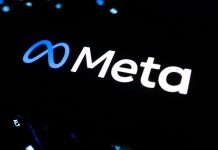The study also notes the importance of retail associates in financing decisions and that shoppers 55 and older returned to brick-and-mortar stores in significant numbers, the only demographic to do so in the wake of the COVID-19 pandemic.
Synchrony, a consumer financial services company, launched its ninth Major Purchase Journey study, revealing that 5% more people are obtaining financing for large purchases compared with two years ago.
The study also notes the importance of retail associates in financing decisions and that shoppers 55 and older returned to brick-and-mortar stores in significant numbers, the only demographic to do so in the wake of the COVID-19 pandemic.
Half of survey respondents said that recent price increases have led them to seek financing options and 66% agreed that financing makes larger purchases more affordable. Retail associates continue to play an integral role in the shopping experience as 81% of respondents said they directly interacted with a salesperson while shopping for most recent purchase.
They also play a pivotal role in financing, with 55% of respondents researching financing by asking the retail associate; and among those who obtained financing in-store, 51% were approached by the associate.
“The results of the Major Purchase Journey study illustrate that rising costs have made financing more appealing for shoppers, particularly when they are looking to buy relatively expensive products such as home improvements, jewelry or electronics,” said Michael Bopp, EVP, Chief Growth Officer, Synchrony. “Opportunities exist for retailers to drive engagement with financing throughout the purchase journey to increase sales conversion.”
The study also notes the trend of older shoppers returning to physical stores. According to the study, this year, 74% of shoppers aged 65+ and 71% of shoppers aged 55 to 64 purchased in-store, compared with 66% and 67%, respectively, two years ago. This stands in contrast to shoppers in the 18-to-44 and 45-to-54 age groups, whose in-store purchases remained relatively constant over the past two years.
“Retailers should pay close attention to the trend of older shoppers coming back to physical stores,” reiterated Bopp. “If this behavior continues, retailers may want to consider everything from product mix to store layouts to welcome these customers.”
A biennial report on the latest consumer spending trends, the study surveyed 3,602 individuals who made a purchase of $500 or more in the past six months. The survey covered a number of categories including furniture, electronics, jewelry, appliances, flooring, home improvement and automotive.
The study also shows consumers returning to pre-pandemic levels of shopping behaviors, with mobile device usage down significantly versus its peak in 2021 and the in-store experience and salespeople continuing to play a significant role in the purchase journey.










